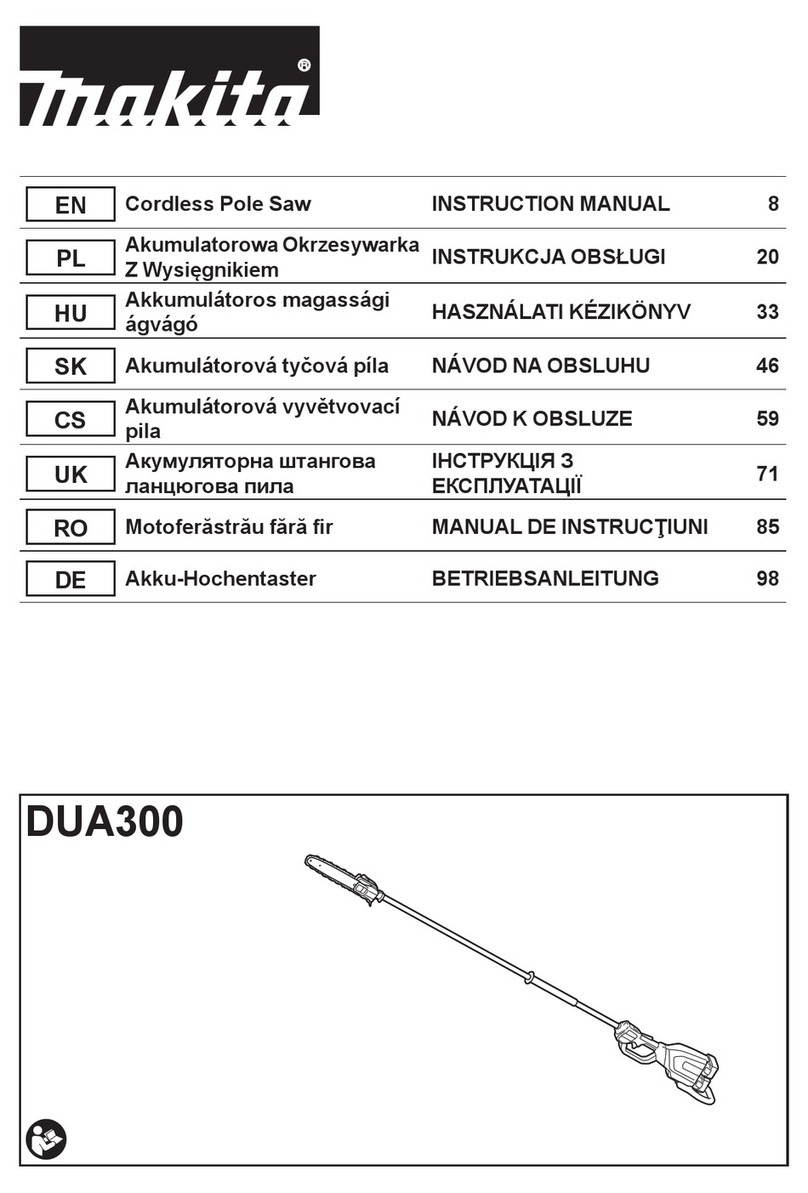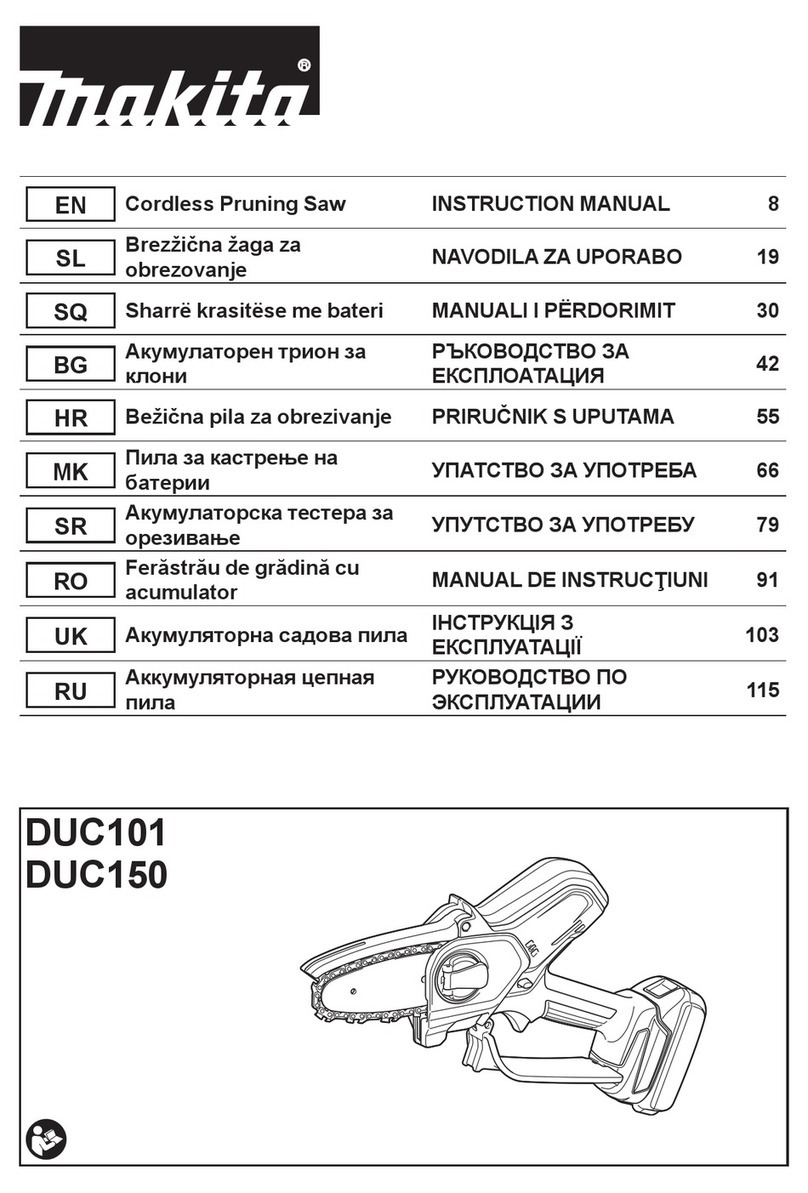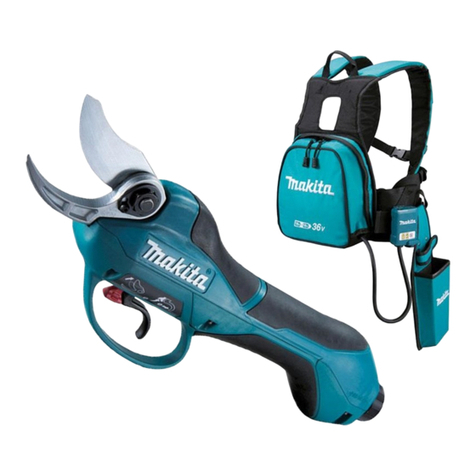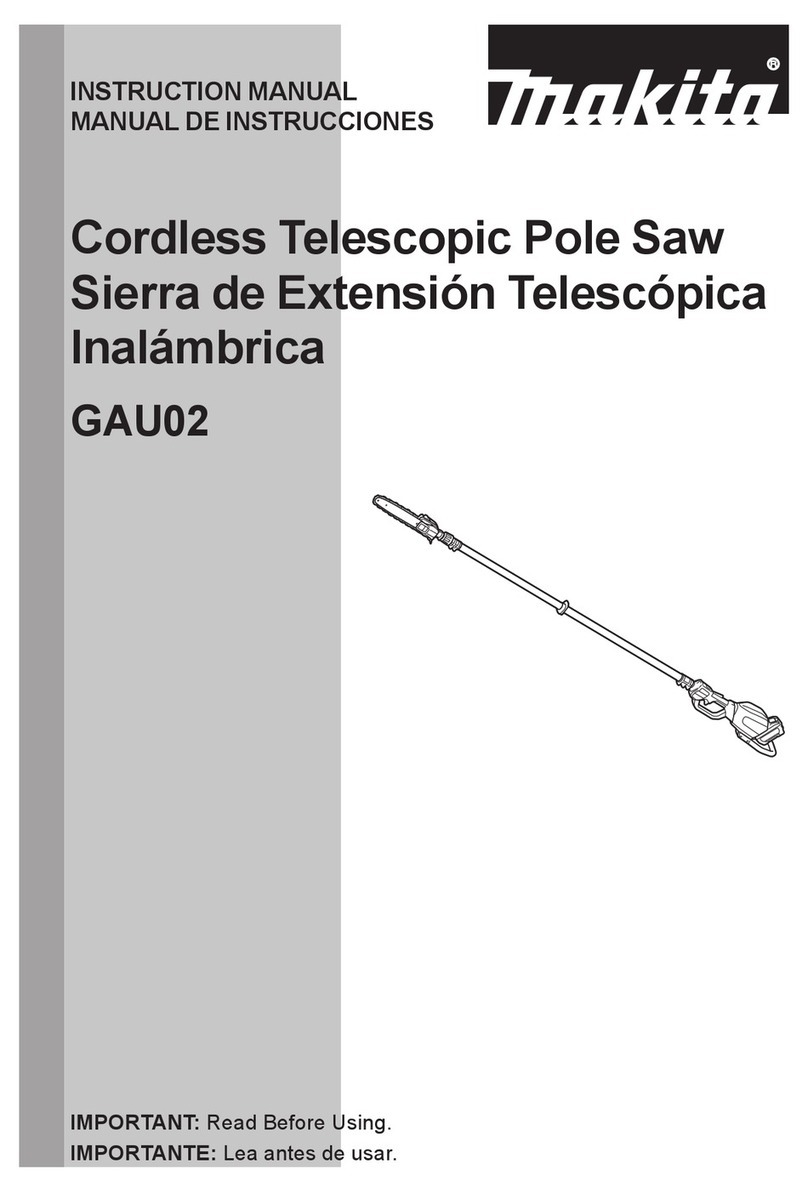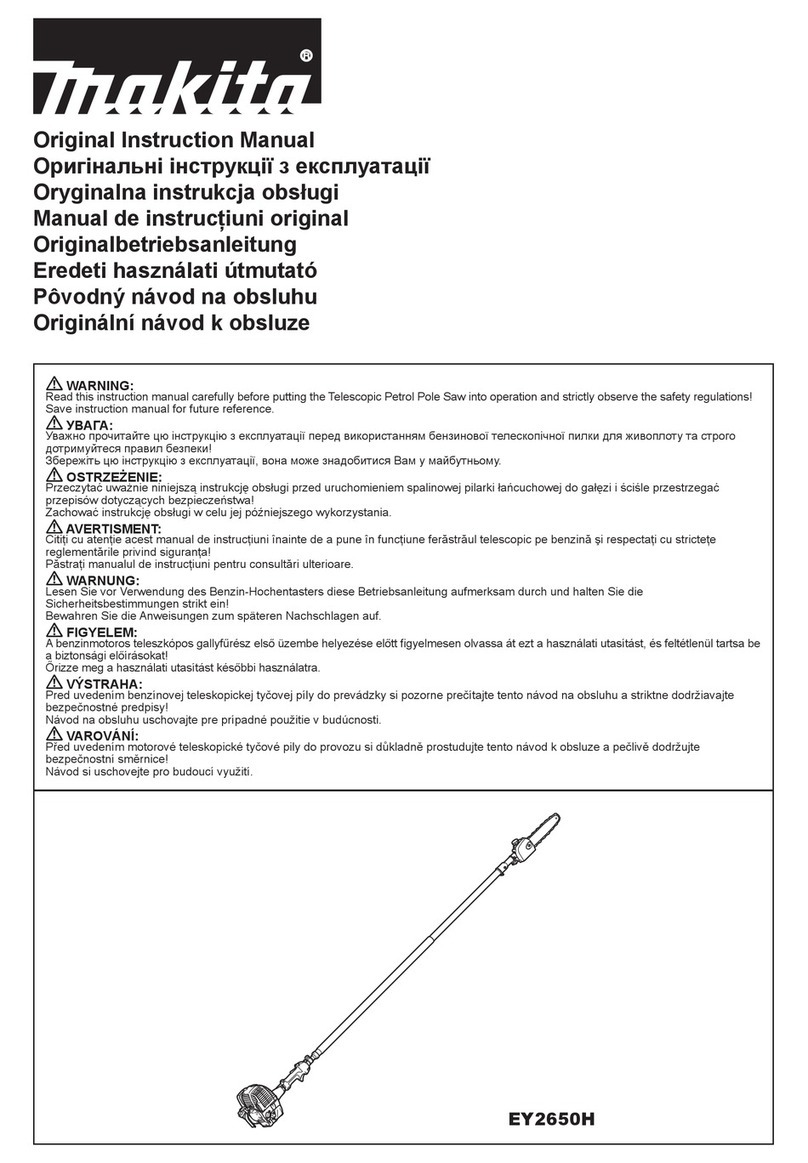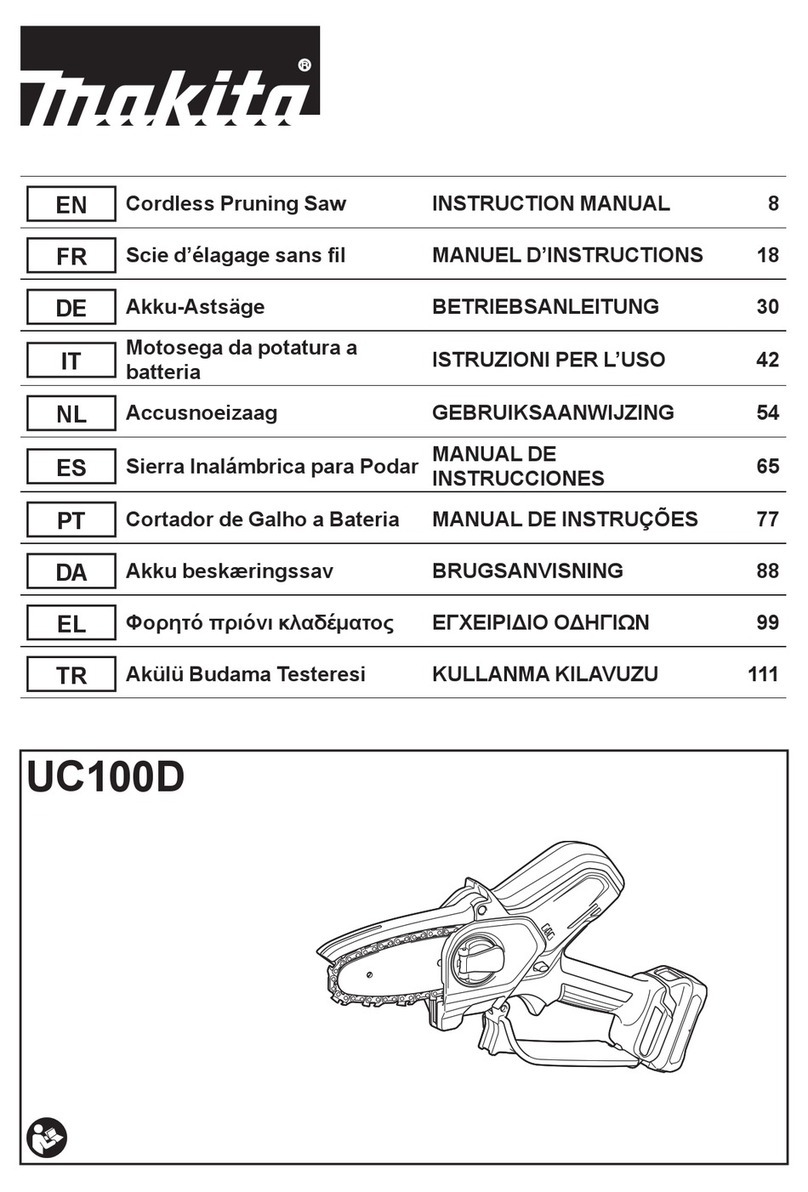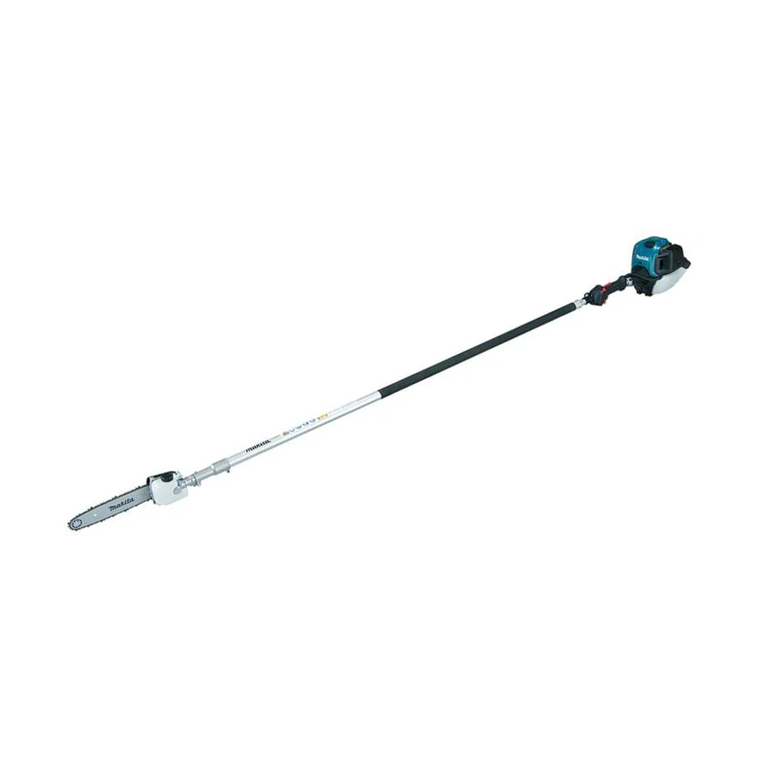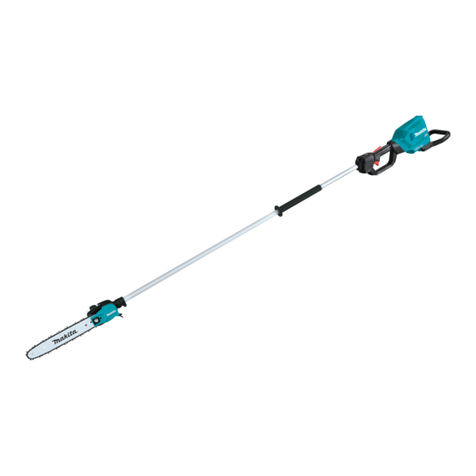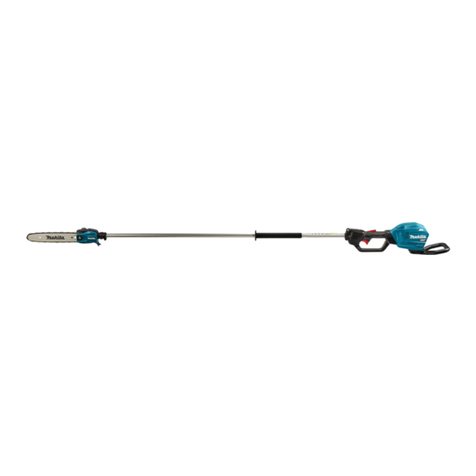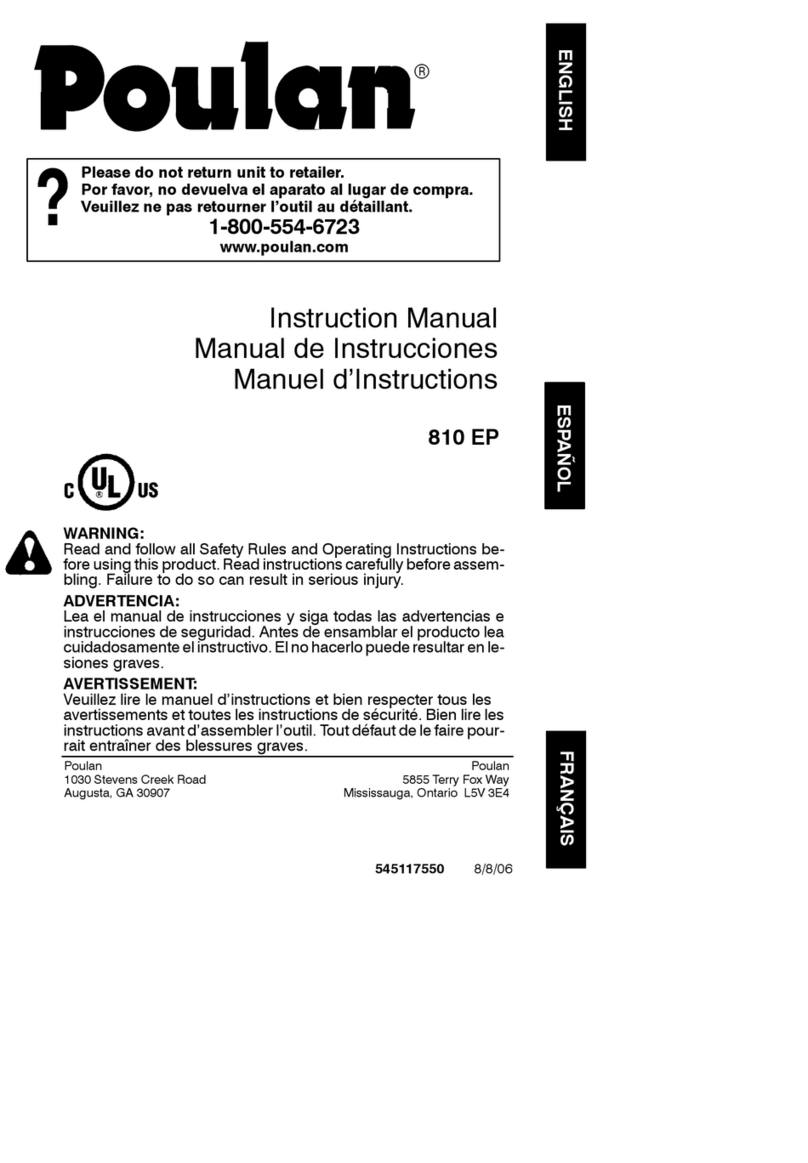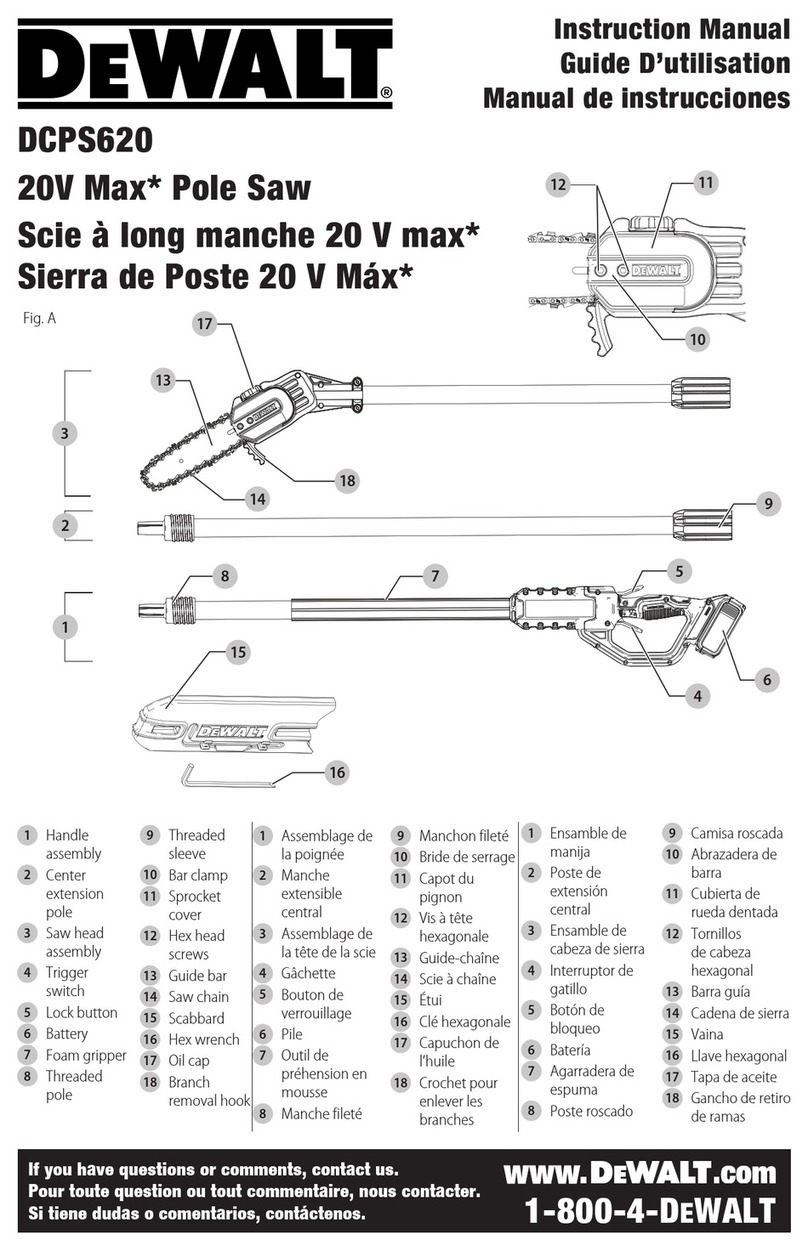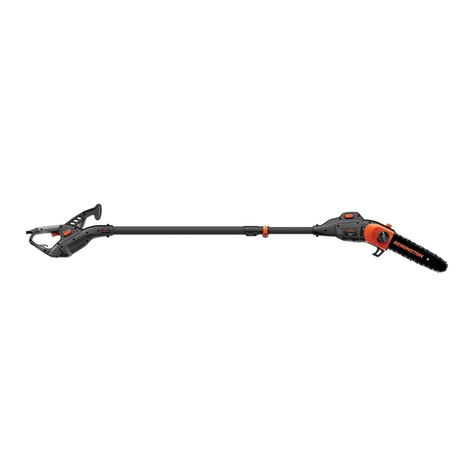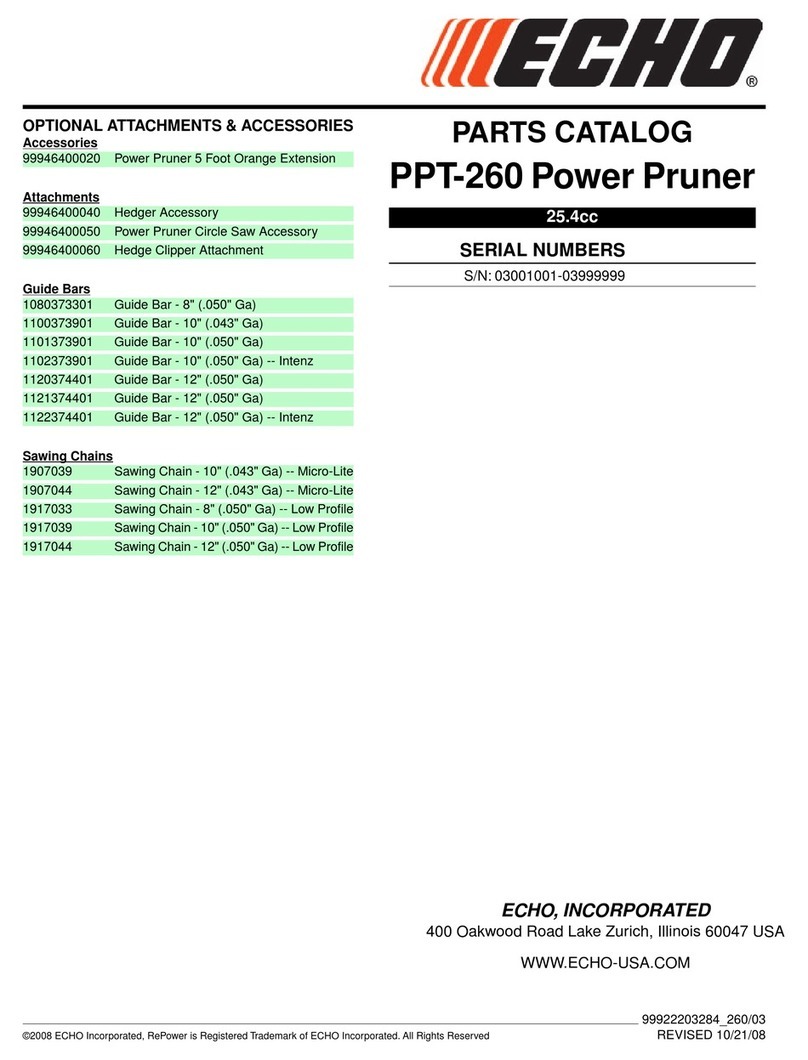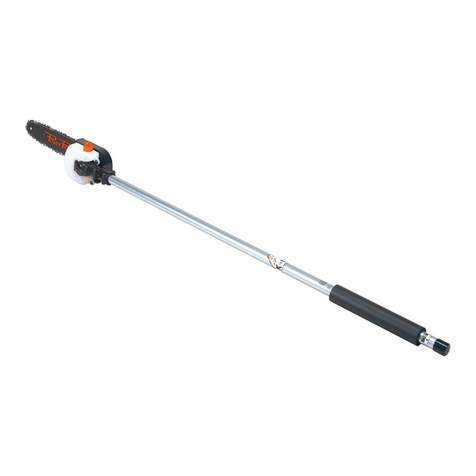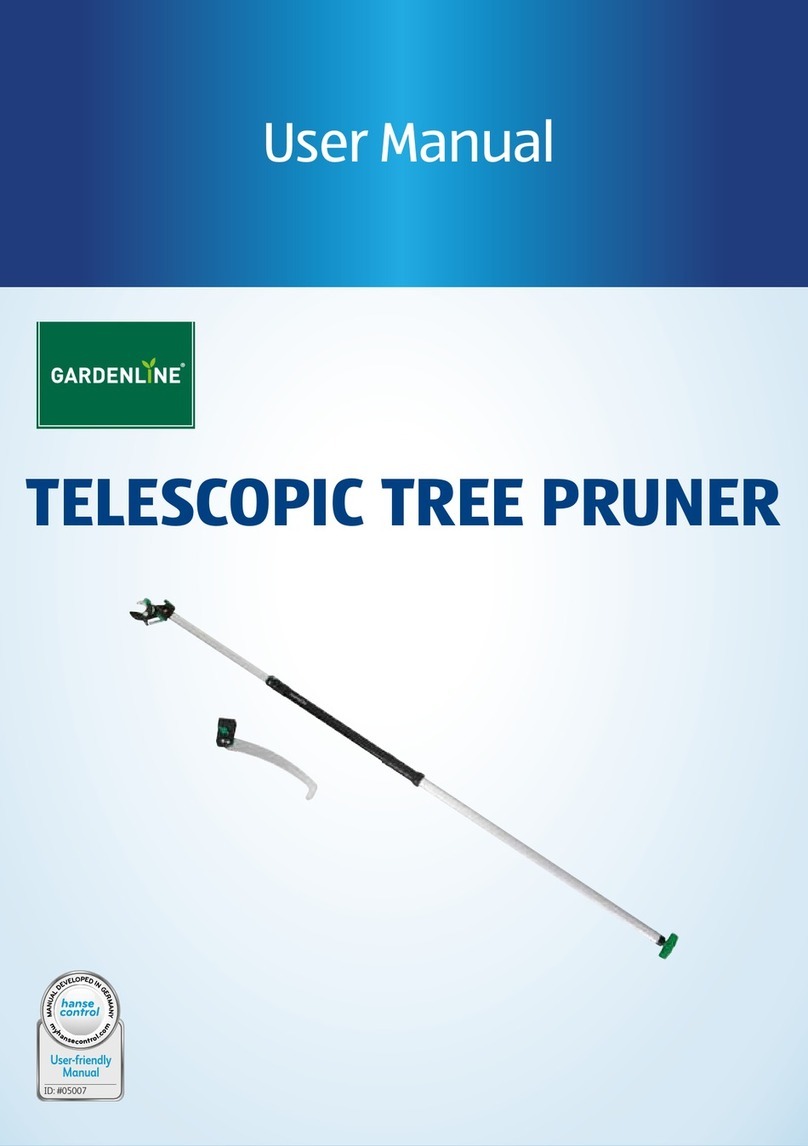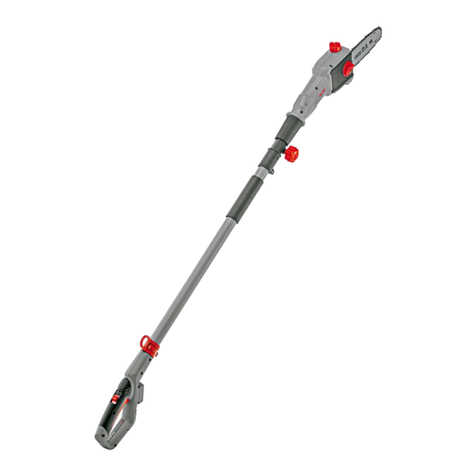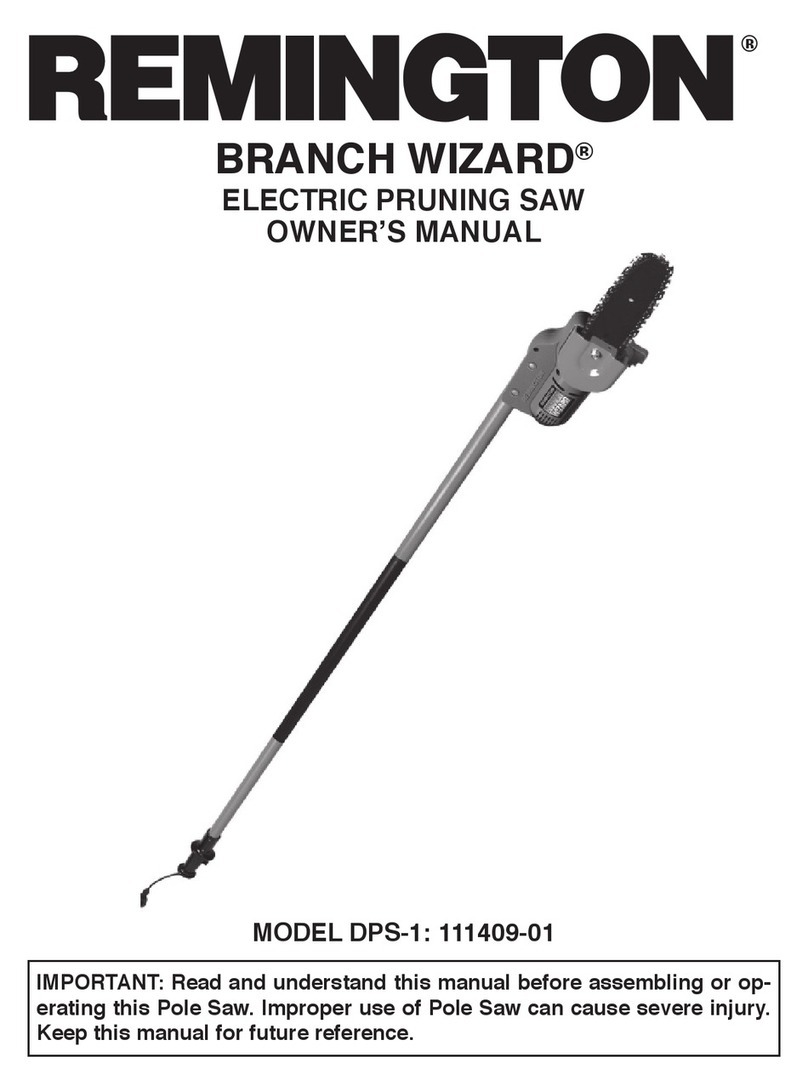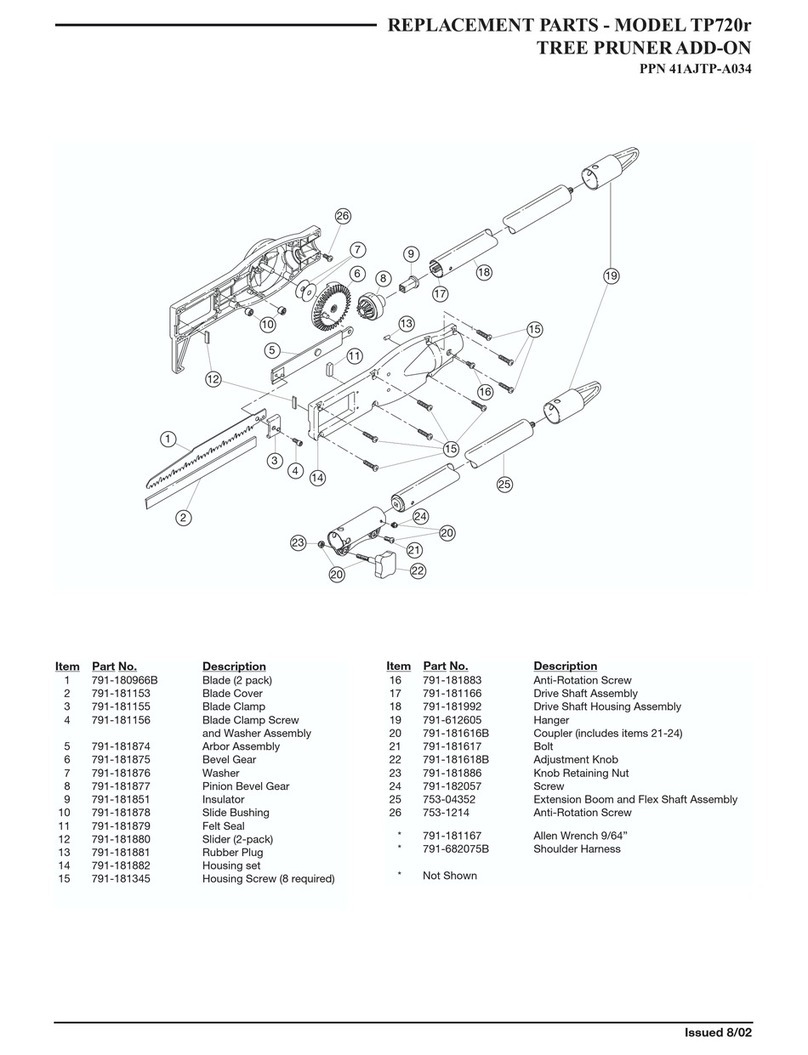
9ENGLISH
EC Declaration of Conformity
For European countries only
The EC declaration of conformity is included as Annex A
to this instruction manual.
Pruning shears safety warnings
WARNING:
Read all safety warnings and all
instructions. Failure to follow the warnings and instruc-
tionsmayresultinelectricshock,reand/orseriousinjury.
Save all warnings and instruc-
tions for future reference.
The term "power tool" in the warnings refers to your
mains-operated(corded)powertoolorbattery-operated
(cordless) power tool.
1. Use personal protective equipment. Always
wear eye protection.Protectiveequipmentsuch
as a dust mask, non-skid safety shoes, hard hat or
hearing protection used for appropriate conditions
willreducepersonalinjuries.
2.
Always wear protective goggles to protect your eyes
from injury when using power tools.The goggles
must comply with ANSI Z87.1 in the USA, EN 166 in
Europe, or AS/NZS 1336 in Australia/New Zealand. In
Australia/New Zealand, it is legally required to wear
a face shield to protect your face, too.
It is an employer's responsibility to enforce
the use of appropriate safety protective equip-
ments by the tool operators and by other per-
sons in the immediate working area.
3. Prevent unintentional starting. Ensure the
switch is in the off-position before connecting
to power source and/or battery pack, picking
up or carrying the tool. Carrying power tools with
yourngerontheswitchorenergisingpowertools
that have the switch on invites accidents.
4. Dress properly. Do not wear loose clothing or
jewellery. Keep your hair, clothing, and gloves
away from moving parts.Looseclothes,jewel-
leryorlonghaircanbecaughtinmovingparts.
5. This tool is for pruning branches. Do not use it
foranyjobexceptthatforwhichitisintended.
6.
Never allow children, persons with reduced
physical, sensory or mental capabilities or lack
of experience and knowledge or people unfamil-
iar with these instructions to use the tool. Local
regulations may restrict the age of the operator.
7. Children should be supervised to ensure that
they do not play with the appliance.
8. Never operate the tool while people, especially
children, or pets are nearby.
9. Do not overreach and keep balance at all
times.Alwaysbesureoffootingonslopesandto
walk, never run.
10. Do not touch moving hazardous parts before
the tool is disconnected from the mains and/or
the battery pack is removed from the tool.
11. Always wear substantial footwear and long
trousers while operating the tool.
12. Disconnect the supply and/or remove the
battery pack from the tool:
• wheneverthetoolisleftbytheuser,
• beforeclearingablockage,
• beforechecking,cleaningorworkingonthe
tool,
• afterstrikingaforeignobjecttoinspectthe
tool for damage,
• ifthetoolstartstovibrateabnormally,for
immediately check.
13. Never operate the tool with defective guards
or shields, or without safety devices, or if the
cord is damaged or worn.
14. Avoid using the tool in bad weather conditions
especially when there is a risk of lightning.
15. Don’t use the tool or perform battery charging
operations in the rain.
16. Don’t leave the tool in rain or wet locations.
17. Be careful not to catch foreign matter between
the blades.Ifthebladesarejammedwithforeign
matter, immediately switch off the tool and discon-
nectthebatteryfromthetool.Thenremovethe
foreignmatterfromtheblades.
18. Never hold the branch you are pruning with
your free hand. Keep your free hand away from
thecuttingarea.Nevertouchtheblades,theyare
very sharp and you may cut yourself.
19. Don’t force the tool to make it cut. You could
slipandinjureyourselforcutsomethingelse
unintentionally.
20.
Avoid cutting electrical wires that may be hidden.
21.
Always check the blades carefully before operation.
22. Handle the blades with extreme care to prevent
cuts or injury from the blades.
23. Disconnect the battery from the tool after each
use and before attempting to perform inspec-
tion or maintenance.
24. When not in use, always keep the tool in its
holster.
Battery tool use and care
1. Avoid dangerous environment. Don't use the
tool in damp or wet locations or expose it to
rain. Water entering the tool will increase the
risk of electric shock.
2. Recharge only with the charger specied by
the manufacturer.Achargerthatissuitablefor
onetypeofbatterypackmaycreateariskofre
whenusedwithanotherbatterypack.
3. Use power tools only with specically desig-
nated battery packs.Useofanyotherbattery
packsmaycreateariskofinjuryandre.





